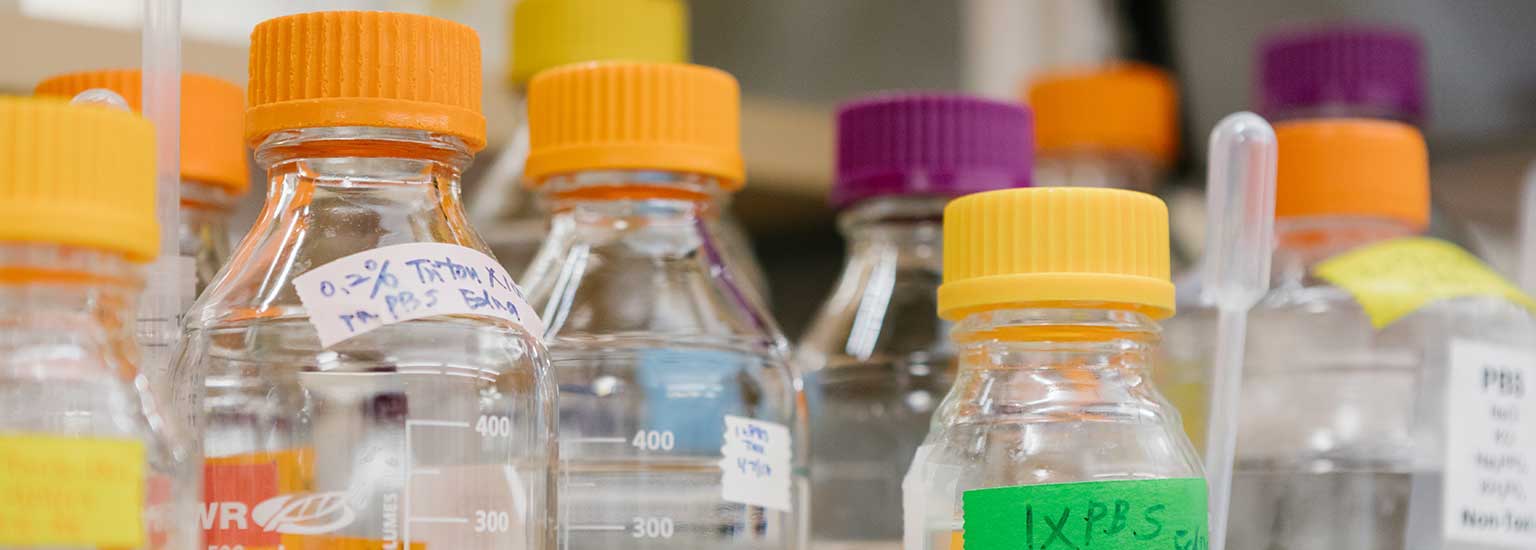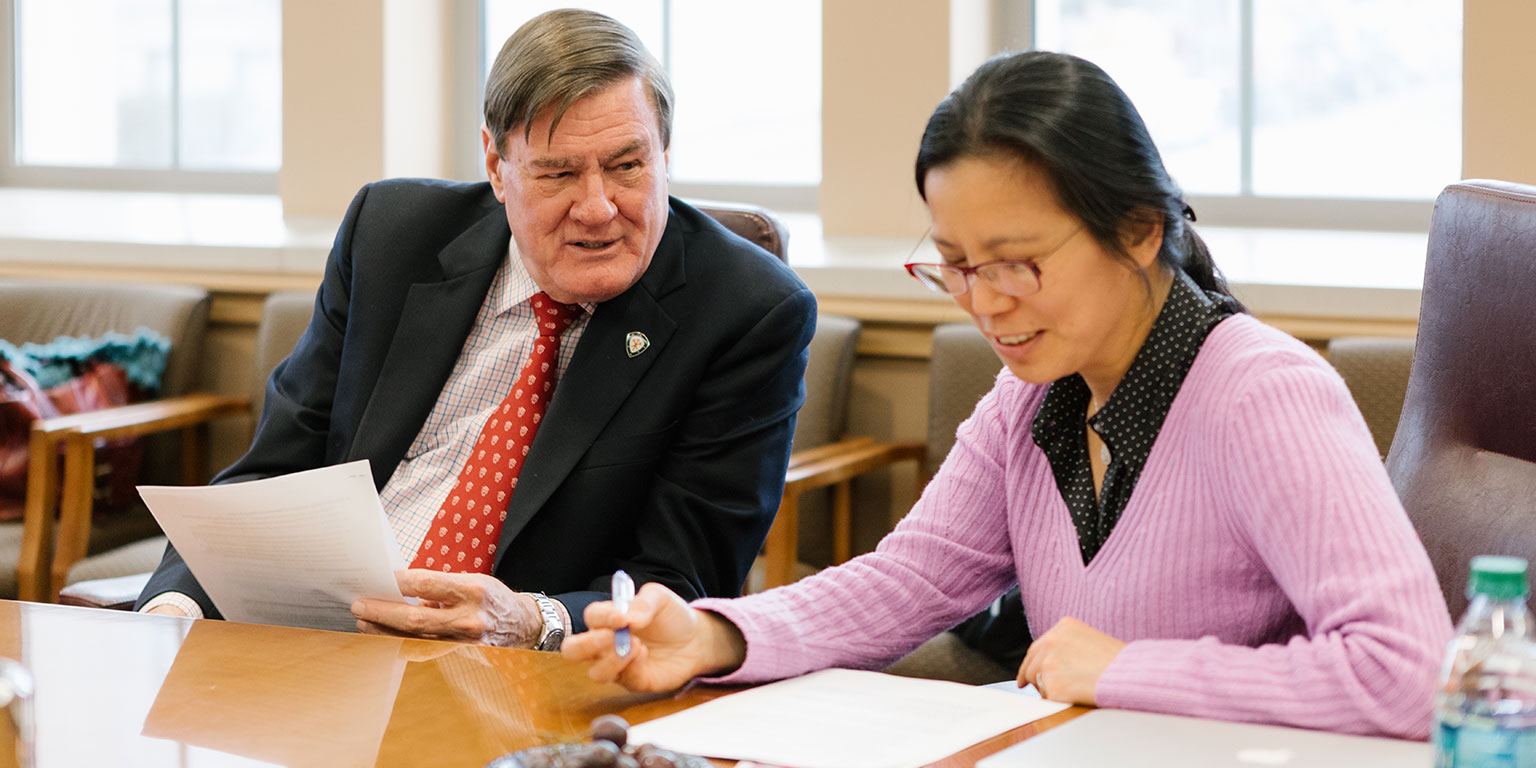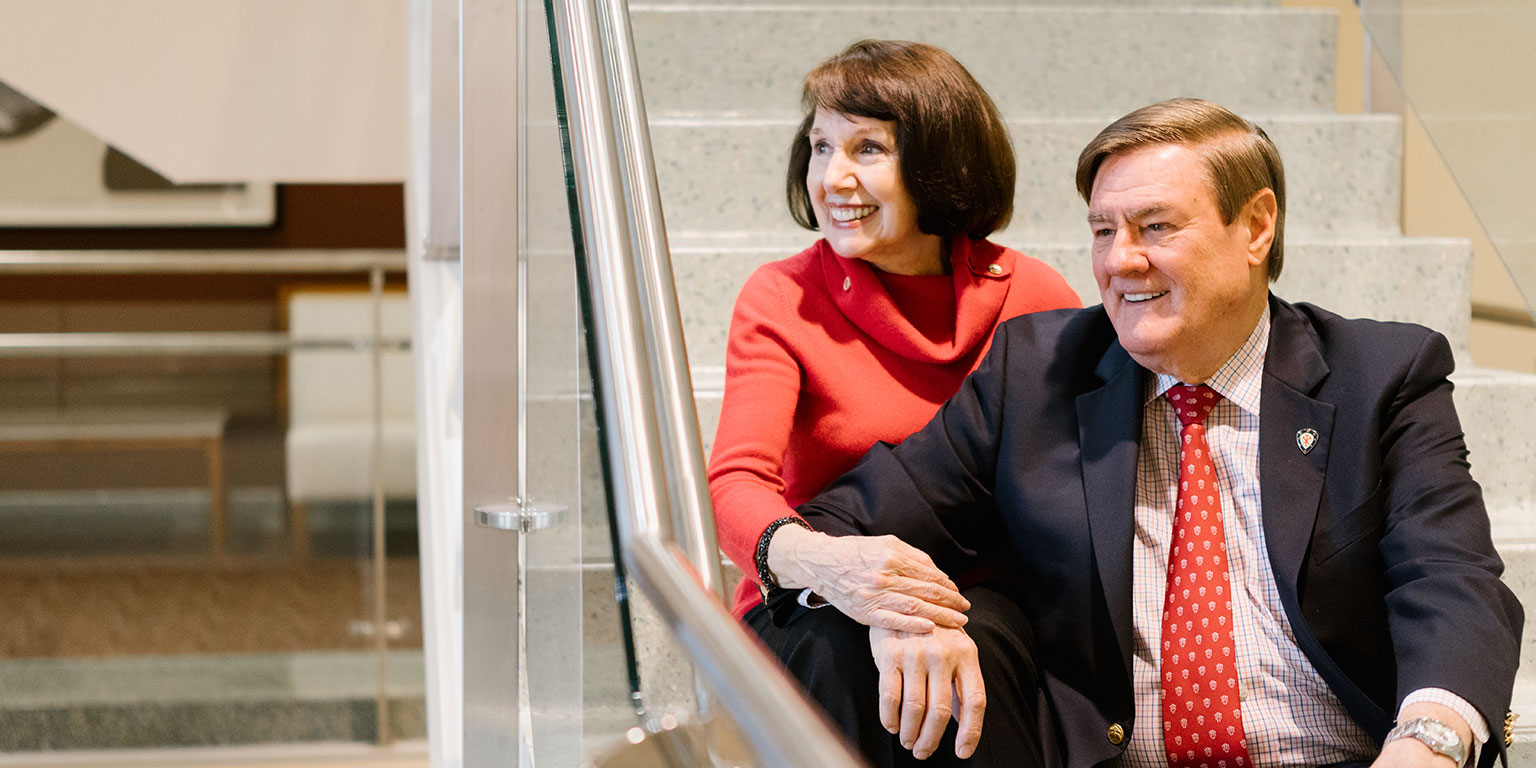By Susan M. Brackney | Spring 2018
Photography by Anna Powell Denton
In many regards, the brain is still a black box. Despite its relative proximity, aspects of the brain’s function remain as mysterious as the Mariana Trench and every bit as veiled as the deepest regions of space.
Nevertheless, a tight-knit team of scientists, assembled within a series of labs inside Indiana University’s Multidisciplinary Science Building II, is making real progress with neuroscience issues that are both complex and socially relevant. Thanks to the establishment of the Linda and Jack Gill Center for Biomolecular Science, five Gill chairs and one Gill scholar — along with their respective research associates — have driven significant advances in treatments for chronic pain, dementia, diabetes, opioid addiction, and more.
“Put six great scientists in one field — all of whom are complementary to each other — together in one building and the productivity isn’t five-X. It’s about 10-X. That’s what we’ve reached,” says founder Jack Gill.
In 2017 alone, Gill Center researchers published more than 50 papers and netted $2.5 million in direct grant funding that will help further their research and train students. But besides advancing neuroscience research through study, publication, and collaboration with the neuroscience community at-large, the center provides the next generation of scientists with “hands-on” research opportunities. And, by encouraging partnerships between IU, other research institutions, and bioscience companies, the Gill Center aims to position IU as a national center of excellence for neuroscience research.
Synergy over silos
To make neuroscience breakthroughs, leveraging talent from various backgrounds just makes sense, according to College of Arts and Sciences Executive Dean Larry Singell.
“If you’re going to look at the biomolecular level, there are chemical processes going on,” Singell says. “There are biological processes going on. There are behavioral issues that manifest. There are a whole series of things that happen. What the Gill Center recognized was that, to do really cutting-edge science, you need a multidisciplinary approach. That has become more common practice now, but at the time, this was quite forward-looking.”
Case in point, Gill Center Director and Chair Hui-Chen Lu says, “Here, everyone has their own projects, but we also try to find ways to work together to make a bigger impact.”
And that means sharing everything from chemical reagents and equipment to the more abstract.
“We have meetings, journal calls, and activities to promote each other’s strengths and work out how to collaborate on projects,” Lu says. “We pick each other’s brains to find the best solution.”





